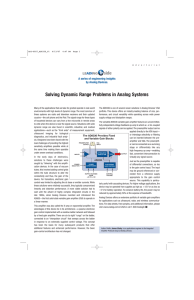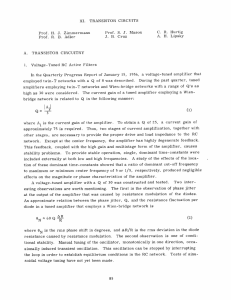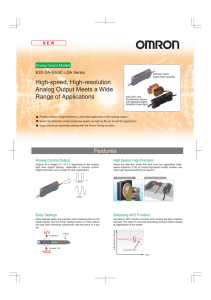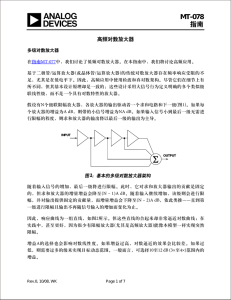Rarely Asked Questions Off-amps, what the heck are off-amps?
advertisement
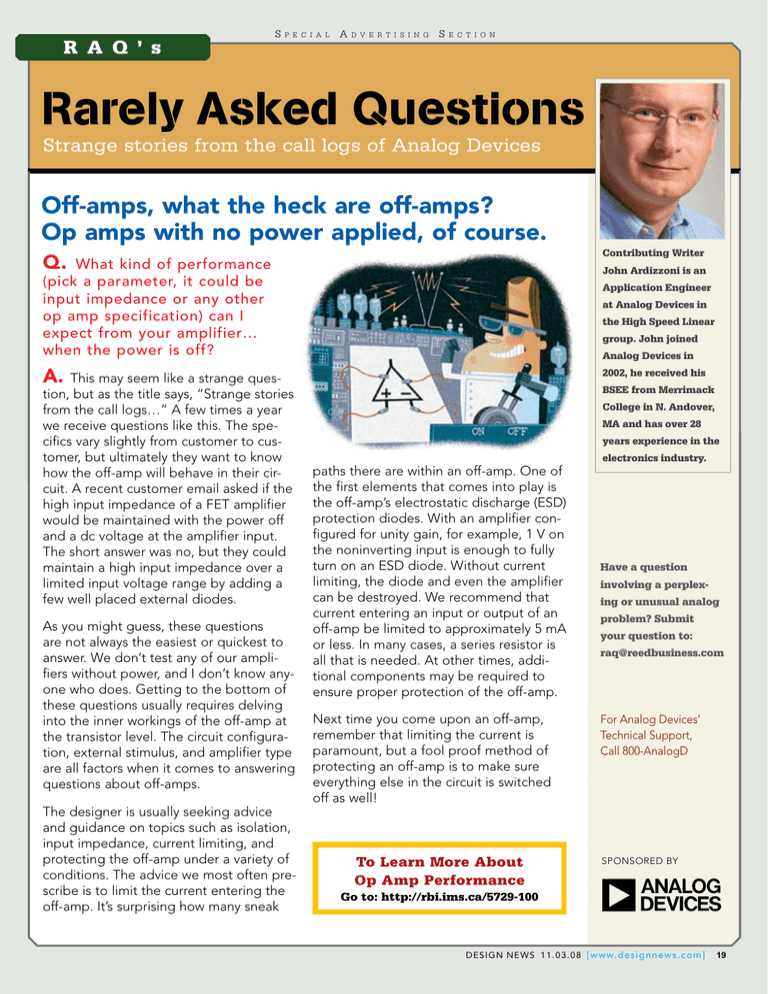
R A Q ’ s S p e c i a l A d v e r t i s i n g S e c t i o n Rarely Asked Questions Strange stories from the call logs of Analog Devices Off-amps, what the heck are off-amps? Op amps with no power applied, of course. Contributing Writer Q. What kind of performance (pick a parameter, it could be input impedance or any other op amp specification) can I expect from your amplifier… when the power is off? John Ardizzoni is an Application Engineer at Analog Devices in the High Speed Linear group. John joined Analog Devices in A. This may seem like a strange question, but as the title says, “Strange stories from the call logs…” A few times a year we receive questions like this. The specifics vary slightly from customer to customer, but ultimately they want to know how the off-amp will behave in their circuit. A recent customer email asked if the high input impedance of a FET amplifier would be maintained with the power off and a dc voltage at the amplifier input. The short answer was no, but they could maintain a high input impedance over a limited input voltage range by adding a few well placed external diodes. As you might guess, these questions are not always the easiest or quickest to answer. We don’t test any of our amplifiers without power, and I don’t know anyone who does. Getting to the bottom of these questions usually requires delving into the inner workings of the off-amp at the transistor level. The circuit configuration, external stimulus, and amplifier type are all factors when it comes to answering questions about off-amps. The designer is usually seeking advice and guidance on topics such as isolation, input impedance, current limiting, and protecting the off-amp under a variety of conditions. The advice we most often prescribe is to limit the current entering the off-amp. It’s surprising how many sneak 2002, he received his BSEE from Merrimack College in N. Andover, MA and has over 28 years experience in the paths there are within an off-amp. One of the first elements that comes into play is the off-amp’s electrostatic discharge (ESD) protection diodes. With an amplifier configured for unity gain, for example, 1 V on the noninverting input is enough to fully turn on an ESD diode. Without current limiting, the diode and even the amplifier can be destroyed. We recommend that current entering an input or output of an off-amp be limited to approximately 5 mA or less. In many cases, a series resistor is all that is needed. At other times, additional components may be required to ensure proper protection of the off-amp. Next time you come upon an off-amp, remember that limiting the current is paramount, but a fool proof method of protecting an off-amp is to make sure everything else in the circuit is switched off as well! To Learn More About Op Amp Performance electronics industry. Have a question involving a perplexing or unusual analog problem? Submit your question to: raq@reedbusiness.com For Analog Devices’ Technical Support, Call 800-AnalogD SPONSORED BY Go to: http://rbi.ims.ca/5729-100 D E S I G N N E W S 1 1 . 0 3 . 0 8 [ w w w. d e s i g n n e w s . c o m ] 19



